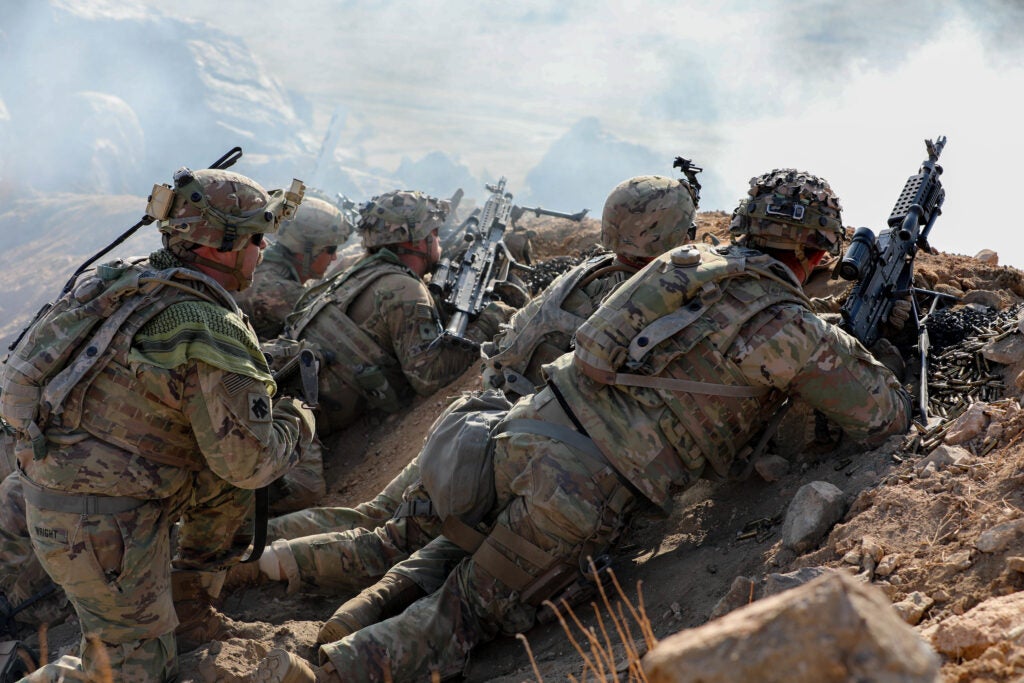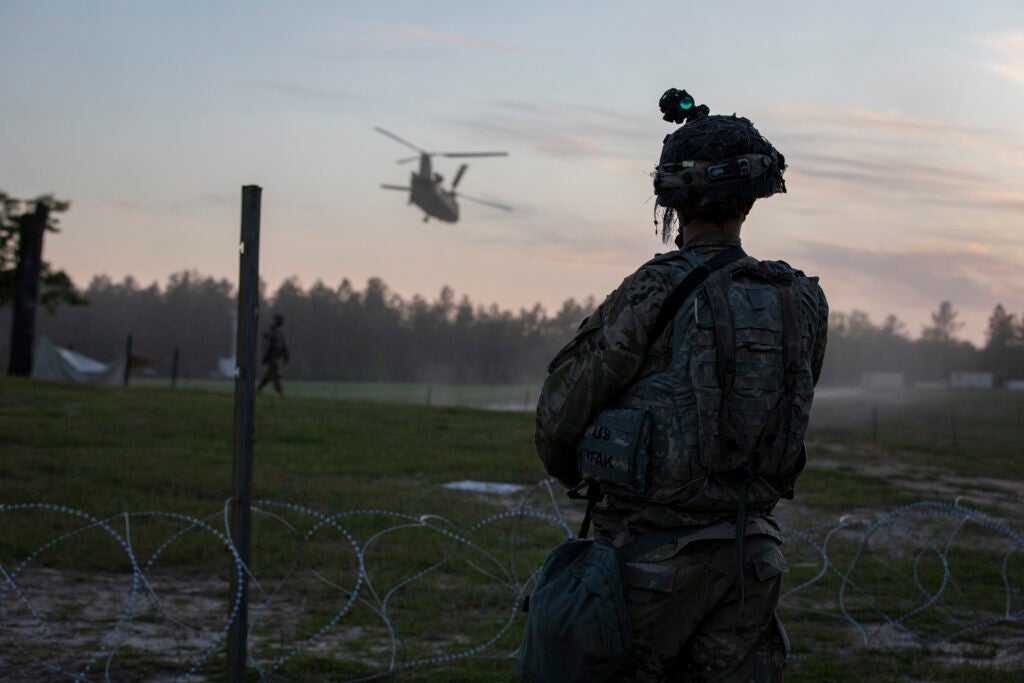The Army acknowledged two years ago what many soldiers and Army families could have told you: the service’s operational tempo was running soldiers into the ground. So, the service said in 2020 that it planned to reduce its “unsustainable” operational tempo, or OPTEMPO, and re-evaluate rotations through combat training centers.
Ultimately, the plan was to get soldiers more time at home and avoid training that may be unnecessary. But that plan seems to have since gone out the window.
As the Army’s 2023 budget request was rolled out this week, Army officials made clear that rotations through combat training centers — the National Training Center at Fort Irwin, California, the Joint Readiness Training Center at Fort Polk, Louisiana, and the Joint Multinational Readiness Center at Hohenfels, Germany — have only increased. The training centers put soldiers up against simulated near-peer enemies in a realistic environment before having to deploy overseas.
Subscribe to Task & Purpose Today. Get the latest in military news, entertainment, and gear in your inbox daily.
That’s in sharp contrast to a “people first” plan released in 2020 at the Annual Association of the U.S. Army meeting. The plan acknowledged that the service’s OPTEMPO placed “significant demands on units, leaders, and soldiers and families and stress on the force.” While combat training center rotations were called the “gold standard of training,” the Army said then that it “must be pragmatic” and “properly balance training opportunities and the resulting OPTEMPO.”

“We’ve been at war for over 18 years, and the strains are there, people are tired but we’re an extraordinarily resilient bunch, and we’re trying to make some tweaks within the training models so they can get more nights on the pillow,” Army Secretary Ryan McCarthy said in 2020. “It takes a lot of effort but it’s going to be tough right now — demand is as high as it could be.”
But the Fiscal Year 2023 budget request, released on Monday, “increases Combat Training Center rotations,” an Army press release says. Asked on Monday how that fits in with 2020’s action plan, Maj. Gen. Mark Bennett, director of the Army budget, said the service was “taking a look obviously at the impact of our families,” but “one of the best ways to take care of our soldiers is to train them, and they like training.”
Maj. Gen. Sean Swindell, the Army’s deputy chief of staff for operations and planning, said the service had “attempted to reduce” the demands on the Army from the joint force, which includes the other military services. But that effort has been going in the opposite direction and training rotations have only increased in order to meet the joint force demand, he said.
“Overall we are trying to reduce the joint force demand while building sustainable readiness,” he said. “And part of taking care of soldiers is providing them that world-class training at the CTCs.”

While it’s certainly important to ensure soldiers and units are ready to deploy, especially when considering the Army’s recent deployments to Europe and last summer’s rapid deployment of soldiers to Afghanistan, part of the intent of the 2020 plan was to find ways to cut back on training rotations that might be unnecessary.
For example, it said units that were planning to deploy on non-combat rotations “may not require a CTC rotation,” and not all brigade combat teams would deploy all of their battalions to the combat training centers.
Sgt. Maj. of the Army Michael Grinston told enlisted leaders last year that they needed to “stand up” for their soldiers and schedule time in between training to rest and recover, even suggesting they put mandatory “white space” on their calendars where nothing is planned.
Soldiers have long raised concerns over the Army’s focus on “readiness” at the expense of its people. In a survey prepared for Gen. James McConville as he took over as chief of staff in 2019, soldiers reported that their unit was “less ready to perform … despite an increased focus on readiness.”. One Army captain said readiness requirements “are almost impossible to meet,” while another pleaded with the Army to “stop the idea that readiness is a number one priority and then literally define everything as readiness.”
This week, it was clear that the tone from Army leaders has shifted. While Army Under Secretary Gabe Camarillo said on Monday that the service was looking “across the spectrum of different ways we can kind of address that churn and those impacts on military families,” Bennett added that soldiers “like to focus on being ready.”
Readiness is “one of the things that the Army has demonstrated this year that it’s able to bring to the table for our combatant commanders … and ready makes them [soldiers] happy.”
What’s new on Task & Purpose
Want to write for Task & Purpose? Click here. Or check out the latest stories on our homepage.
